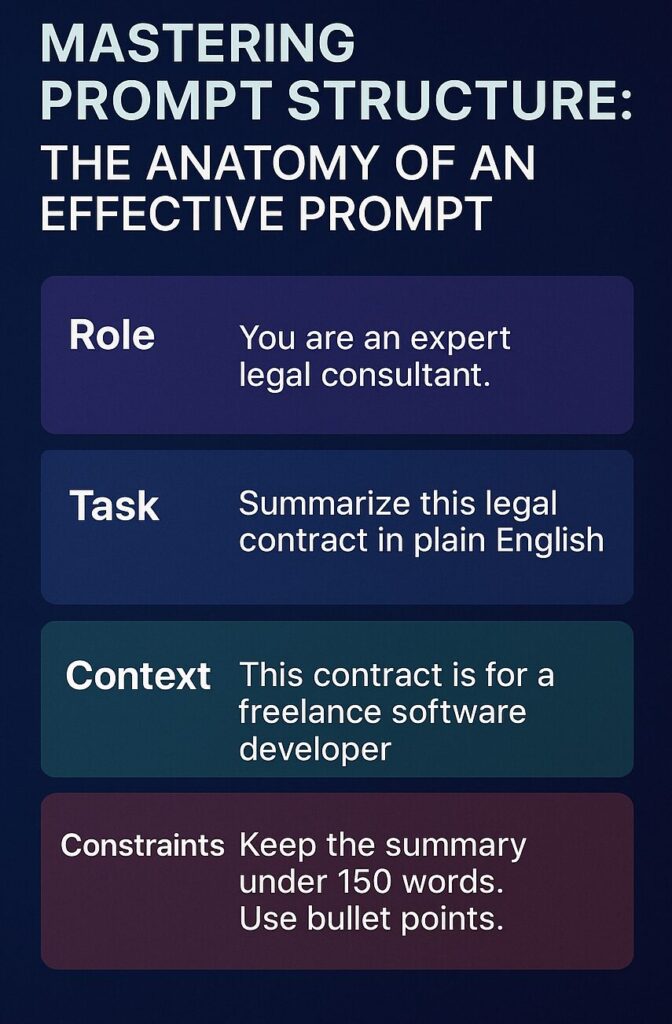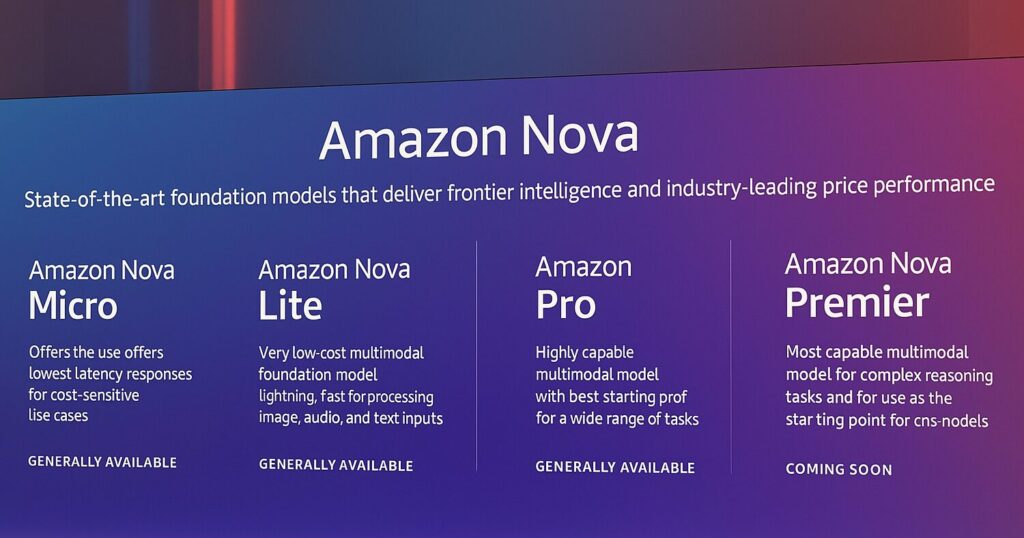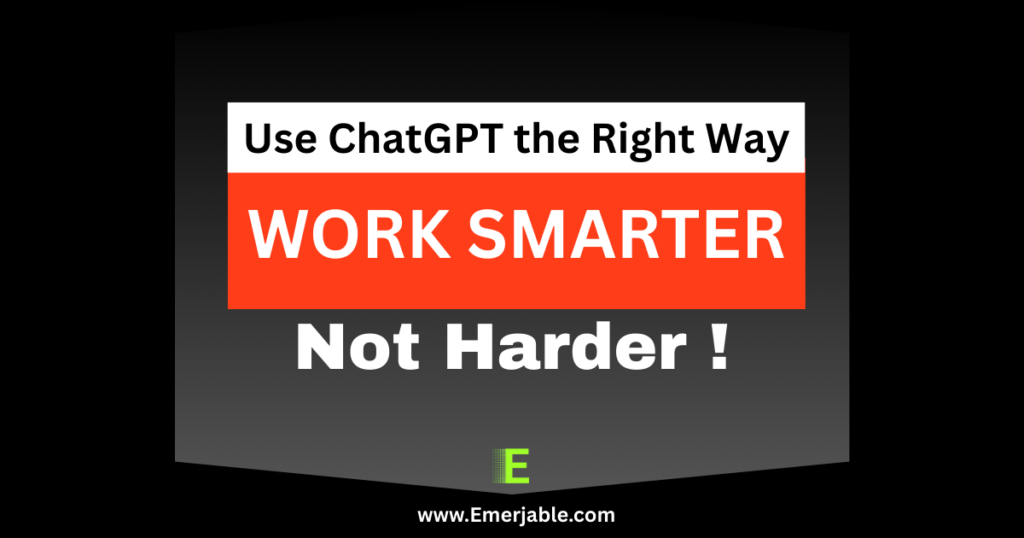Table of Contents
- Introduction: Why LLM Prompts Are the Key to AI Success
- What Are LLM Prompts?
- Why Prompt Engineering Matters
- Types of Prompting Techniques
- Zero-shot prompting
- Few-shot prompting
- Chain-of-thought prompting
- Role-based prompting
- Instructional prompting
- Context-stacking
- Multimodal prompting
- Mastering Prompt Structure: The Anatomy of an Effective Prompt
- Examples of Prompts for Different Use Cases
- Content creation
- Programming assistance
- Customer support
- Business and productivity
- Educational support
- Creative writing
- Troubleshooting and Optimizing Prompts
- Prompt Engineering for Specific LLMs (ChatGPT, Claude, Gemini, etc.)
- Prompt Libraries and Tools to Enhance Prompt Engineering
- Case Studies and Real-World Applications of Prompt Engineering
- Final Thoughts: The Future of Prompting
Introduction: Why LLM Prompts Are the Key to AI Success
Learning how to design effective LLM prompts is an invaluable skill in today’s digital landscape, bridging the gap between human intent and AI output.
In the age of generative AI, prompt engineering has emerged as the hidden superpower behind the scenes. With large language models (LLMs) like ChatGPT, Claude, Gemini, and Mistral becoming integral to business, productivity, and creativity, understanding how to craft effective prompts is no longer optional—it’s essential.
Whether you’re a developer, marketer, student, or entrepreneur, LLM prompts determine how intelligently, accurately, and efficiently your AI assistant performs.
This guide dives deep into the science and art of prompting, helping you master the principles and techniques that unlock the true potential of AI text generation.
What Are LLM Prompts?
<a name=”what-are-llm-prompts”></a>
A prompt is any input you give to a Large Language Model (LLM) to generate a response.
Think of a prompt as a set of instructions. It’s your conversation starter, task assigner, and creative spark—all in one.
Prompts can be as simple as:
To fully leverage AI’s capabilities, the use of LLM prompts is key. Effective LLM prompts provide clarity, direction, and context, leading to more accurate and relevant AI outputs. Whether you are crafting a blog post or seeking assistance with creative writing, incorporating LLM prompts makes a difference.
“Write a blog post about climate change.”
Or as complex as:
“You are an expert technical writer. Generate a product documentation draft for a SaaS app targeting startup CTOs. Use clear subheadings, bullet points, and persuasive copywriting techniques.”
In both cases, you’re guiding the LLM to understand intent, tone, and context—and the difference in quality can be immense depending on how well you craft your prompt.
Why Prompt Engineering Matters
🧠 Better Outputs Begin with Better Inputs
As we advance in the era of AI, equipping yourself with the knowledge of effective LLM prompts will set you apart in any industry.
Prompt engineering is the process of strategically crafting inputs to steer LLM behavior.
The better your prompt, the better the outcome:
- More relevant content
- Reduced hallucination
- Consistent formatting
- Context-aware responses
⚙️ LLMs Are Flexible—but Not Omniscient
LLMs aren’t mind-readers. They rely heavily on context and instructions. Vague prompts often yield vague answers. Precision is power.
🪄 Prompt Engineering is a Leverage Point
Just like search engine optimization (SEO) transformed how we write for Google, prompt engineering is transforming how we write for AI.
LLM prompts not only help in generating responses but also guide the AI in understanding the intent behind your requests. By refining and optimizing your LLM prompts, you can ensure high-quality interactions with AI systems.
Types of Prompting Techniques
1. Zero-shot Prompting
Definition: Ask the model to perform a task with no examples.
Example:
“Summarize this article in 3 sentences.”
Use case: Quick tasks with clear instructions.
2. Few-shot Prompting
Definition: Provide examples to guide the model’s behavior.
Example:
“Translate English to Spanish:
- Hello = Hola
- Thank you = Gracias
- Good night =”
Use case: Classification, translation, formatting tasks.
3. Chain-of-Thought Prompting
Definition: Instruct the model to explain its reasoning step-by-step.
Effective LLM prompts are not just about what to say but also about how you say it—context, tone, and specificity matter greatly in achieving the desired AI response.
Example:
“If a train leaves NYC at 2 PM and travels at 100 mph, how far will it travel by 6 PM? Let’s think step by step.”
Use case: Math problems, logic reasoning, decision-making.
4. Role-Based Prompting
Definition: Assign a specific identity or persona to the model.
Example:
“You are a career coach. Give resume advice to a software developer switching to product management.”
Use case: Tailoring tone, style, and domain knowledge.
5. Instructional Prompting
Definition: Use commands and detailed instructions.
Example:
“Generate a detailed project plan for launching an ecommerce website. Include timeline, key deliverables, and team roles.”
Use case: Productivity, business, content creation.
6. Context-Stacking
Definition: Include background information or multiple steps in the prompt.
Example:
“Here’s the company bio, here’s the tone, here’s an outline. Now write the blog post.”
Use case: Long-form content, personalized copy, structured tasks.
7. Multimodal Prompting (for applicable models)
Definition: Use text + images + documents as input.
Example:
“Analyze this chart and describe trends.”
Use case: Visual analysis, data reporting, design critique.
Mastering Prompt Structure: The Anatomy of an Effective Prompt
A powerful prompt often includes the following elements:
- Role – Define who the model is: “You are an expert legal consultant.”
- Task – Clearly state what you want: “Summarize this legal contract in plain English.”
- Context – Provide background: “This contract is for a freelance software developer.”
- Constraints – Specify length, tone, format: “Keep the summary under 150 words. Use bullet points.”
- Examples (optional) – Show preferred style or output: “Here’s an example of a good summary…”

Examples of Prompts for Different Use Cases
📚 Content Creation
“Write a LinkedIn post targeting B2B marketers about AI-driven email personalization. Make it concise, engaging, and end with a CTA.”
💻 Programming Assistance
“Act as a senior Python developer. Refactor this code to improve performance and explain each change.”
🎧 Customer Support
“You are a polite customer service agent. Draft an email response to a user complaining about delayed shipping.”
📈 Business and Productivity
“Generate 5 KPI ideas for a SaaS company focused on reducing churn.”
🎓 Educational Support
“Explain quantum entanglement to a high school student using analogies and simple language.”
✍️ Creative Writing
“Write the first paragraph of a sci-fi novel set on a terraformed Mars. Use vivid descriptions and suspense.”
Troubleshooting and Optimizing Prompts
Common Issues & Fixes
| Problem | Cause | Fix |
|---|---|---|
| Generic or vague output | Prompt lacks context or structure | Add background, define task, give examples |
| Repetitive answers | Prompt lacks variety or constraints | Add style and tone constraints |
| Hallucinations | Model guessing facts | Include verified context, reduce open-endedness |
| Too long/short | No length guidance | Use word count or format constraints |
Prompt Optimization Tips
- Add “Let’s think step by step” for reasoning.
- Use “As an expert in…” to improve tone and depth.
- Use “Don’t include…” to avoid unwanted content.
- Test variants side-by-side to A/B prompt performance.
Prompt Engineering for Specific LLMs
ChatGPT (OpenAI)
- Responds well to structured, role-based prompts.
- Allows custom GPTs with persistent instructions.
Unlock the Power of ChatGPT: 20 Golden Rules for Writing Effective Prompts
Claude (Anthropic)
- Excels with ethical, philosophical, or nuanced language.
- Supports longer contexts.
Gemini (Google)
- Integrates natively with search/contextual knowledge.
- Handles multi-turn prompts well.
Mistral, LLaMA, etc.
- Open-source models may require more hand-holding and pre-context.
Pro Tip: Always test prompts across models—different LLMs have different prompt “personalities.”
Prompt Libraries and Tools to Enhance Prompt Engineering
Libraries and Collections
Tools
- LangChain / LlamaIndex – For programmatic prompt chaining
- PromptLayer – For prompt tracking and experimentation
- OpenPrompt / Promptify – Python libraries for prompt templating
🚀 Case Studies and Real-World Applications of Prompt Engineering
The theory behind LLM prompts is powerful—but real-world applications show just how transformative good prompting can be. Here are examples of how businesses, creators, and developers are engineering prompts to supercharge results.
📈 Case Study 1: Improving Customer Support with Role-Based Prompts
Company: Mid-sized SaaS company
Problem: Customer service reps spent hours drafting replies to common queries.
Old Prompt:
“Answer this customer complaint about billing.”
New Prompt (Role-based + Instructional Prompt):
“You are a friendly and empathetic customer support agent. Respond to the following billing complaint. Apologize for the issue, explain the reason for the error, and offer a solution. Keep the tone warm and professional.”
Result:
- Response time cut by 60%
- Increased customer satisfaction scores
- Agents used the prompt for over 70% of email responses
🧑🏫 Case Study 2: Enhancing Education with Chain-of-Thought Prompting
Educator: Online tutoring platform
Problem: Students received answers but lacked step-by-step explanations.
Old Prompt:
“Solve this equation: 3x + 5 = 20”
Improved Prompt:
“Solve this equation: 3x + 5 = 20. Let’s think step by step.”
Result:
- Students better understood the solution process
- Higher engagement on math help forums
- Increased repeat usage of tutoring tools
✍️ Case Study 3: Blog Content Optimization for SEO
User: Solo marketer at a startup
Problem: Blog posts lacked structure and SEO optimization.
Before Prompt:
“Write a blog post about AI in marketing.”
Optimized Prompt:
“You are an expert content writer. Write a 1,000-word blog post titled ‘How AI is Transforming Digital Marketing.’ Use a compelling introduction, H2 subheadings, SEO best practices, and include a call-to-action at the end.”
Results:
- Blog traffic increased by 40%
- Bounce rate dropped
- Post ranked on Google within 10 days
🏭 Prompt Templates by Industry and Role
Expanding your prompt toolkit with industry-specific examples can help tailor LLM output to real needs. Here are advanced templates categorized by use case:
📣 Marketing
- Blog writing: “Act as an SEO expert. Write a blog post targeting the keyword ‘B2B lead generation strategies’. Use clear subheadings, short paragraphs, and include stats from 2023.”
- Email copy: “Generate a promotional email for a SaaS tool helping remote teams. Include a catchy subject line, short body copy, and strong CTA.”
- Social media: “Write 5 LinkedIn post hooks for a brand new AI analytics tool targeting marketing managers.”
👩💼 HR
- Job descriptions: “Create a job description for a mid-level UX Designer. Include responsibilities, qualifications, and company perks. Use a friendly, inclusive tone.”
- Interview questions: “Generate 10 behavioral interview questions to assess leadership skills in product managers.”
- Policy writing: “Draft a hybrid work policy for a 100-person tech startup. Include expectations, remote work guidelines, and tools used.”
⚖️ Legal
- Contract summaries: “Summarize the following NDA in plain English. Highlight key terms, parties involved, and duration of confidentiality.”
- Clause drafting: “Write a non-compete clause suitable for a freelance software developer contract. Keep it fair and legally sound.”
💼 Sales
- Sales pitch outline: “Create a pitch structure for a B2B AI platform targeting enterprise clients. Include intro, problem, solution, differentiation, and CTA.”
- Follow-up email: “Generate a follow-up email for a prospect who viewed our product demo last week. Keep it concise and friendly, and include a calendar link.”
🧱 Visual Comparisons and Tables
Prompt Style Comparison Table
| Style | Description | Example | Use Case |
|---|---|---|---|
| Zero-shot | No examples | “Summarize this report.” | Fast, general tasks |
| Few-shot | With examples | “Translate: Hello=Hola, Thank you=Gracias” | Training on-the-fly |
| Chain-of-thought | Step-by-step logic | “Let’s think step by step…” | Math, reasoning |
| Role-based | Assign a persona | “You are a lawyer…” | Professional tone |
| Instructional | Task-based commands | “Write a blog post…” | Content generation |
Prompt Iteration Results (Sample Chart Description)
| Prompt Version | Output Quality | Word Count | Coherence | Engagement |
|---|---|---|---|---|
| V1 – Generic | ⭐⭐ | 450 | Medium | Low |
| V2 – Structured + Role | ⭐⭐⭐⭐ | 800 | High | Medium |
| V3 – Structured + Role + Context | ⭐⭐⭐⭐⭐ | 950 | Very High | High |
Final Thoughts: The Future of Prompting
As AI systems evolve, prompt engineering will mature into prompt orchestration—combining prompts, data sources, logic flows, and memory into more complex systems.
The good news? The foundation remains the same:
- Be clear.
- Be contextual.
- Test and iterate.
- Think like a teacher guiding a very smart student.
If you master the art of effective LLM prompts, you don’t just use AI—you command it.
Ready to Start Prompting Like a Pro?
🔍 Try reworking your everyday prompts using the techniques above.
💡 Bookmark this guide for reference or share it with your team.
🚀 Dive deeper with our cluster guides on [ChatGPT for Marketers], [Prompt Engineering for Developers], and [LLM Use Cases in Business].
With the right LLM prompts, your AI interactions can be more fluid and intuitive, potentially transforming how you work and innovate.
When you master the art of crafting LLM prompts, you will find that your AI-powered projects will yield far superior results, making you a leader in your field.
The focus on LLM prompts is essential for anyone looking to maximize the potential of AI in their workflows.
The continuous refinement of LLM prompts will not only improve your effectiveness with AI but also elevate your overall output quality.
In conclusion, if you aim to harness the power of AI, mastering LLM prompts is a crucial step towards achieving impactful results.



